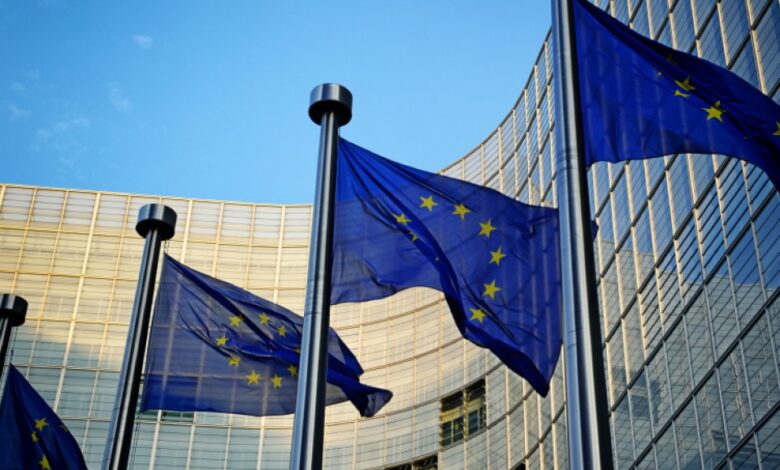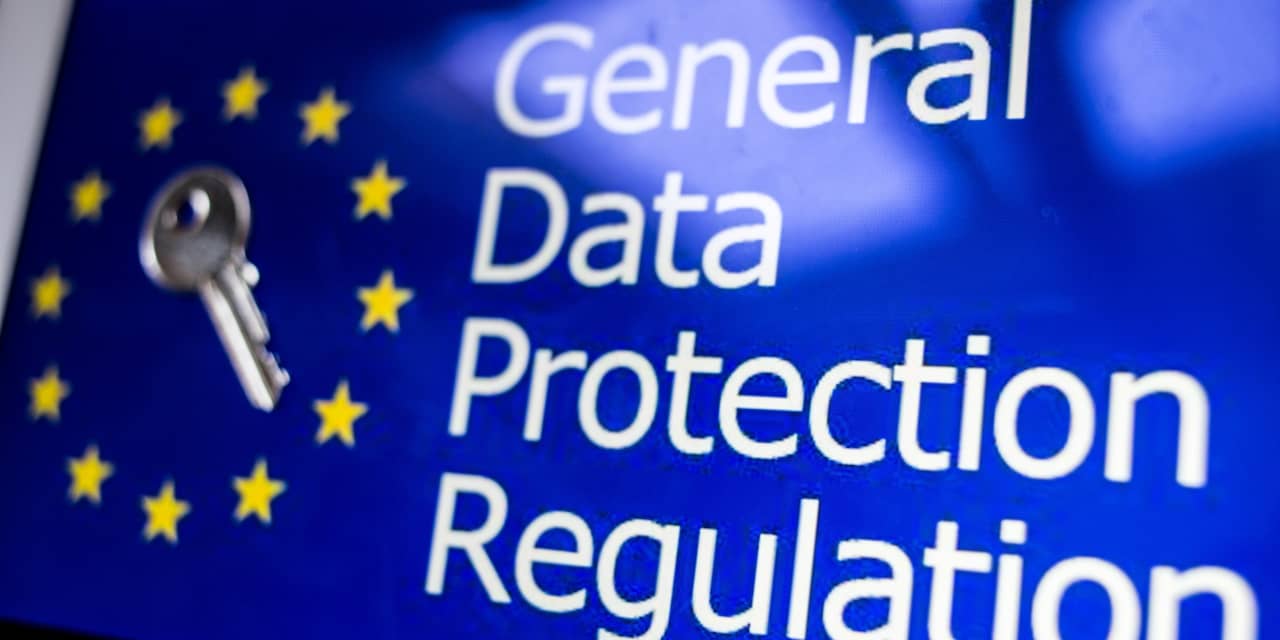
European Regulators Are About To Become More Political
European Regulators Are About To Become More Political. That’s a pretty bold statement, right? But as we delve deeper into the shifting sands of European politics and regulation, it’s a conclusion that’s becoming increasingly difficult to ignore. For years, we’ve seen a delicate balance between independent regulatory bodies and the political will of member states. Now, that balance feels like it’s teetering on the brink of a significant shift, with potentially far-reaching consequences for businesses, consumers, and the very fabric of the EU itself.
This isn’t just about whispers in Brussels; it’s about tangible examples of political pressure influencing regulatory decisions, from tech regulation to environmental policy. We’ll be exploring the rise of populism and nationalism, the changing power dynamics within European institutions, and the role of public opinion and the media in shaping this dramatic change. Get ready to unravel a complex story with implications that extend far beyond the halls of power.
Increased Political Influence on Regulatory Decisions

The seemingly impartial world of European regulation is facing a growing challenge: the encroachment of political influence. For decades, the EU, and its member states, strived to establish independent regulatory bodies, shielding them from partisan pressures to ensure fair and evidence-based decision-making. However, recent events suggest this carefully constructed wall of separation is crumbling, raising serious questions about the future of regulatory integrity across the continent.The historical context is one of gradual evolution.
Initially, many regulatory bodies were closely tied to national governments, reflecting the prevailing political landscape. The post-war period saw a push towards greater independence, particularly with the establishment of the EU and its commitment to a single market. This drive aimed to create a level playing field for businesses and protect citizens from arbitrary government actions. The creation of independent agencies with clearly defined mandates and protected tenure for their leaders was a key part of this process.
However, this independence has always been a work in progress, subject to ongoing negotiation and political pressure.
Examples of Political Influence on Regulatory Outcomes
Several recent examples illustrate the growing influence of politics on regulatory decisions. The ongoing debate surrounding the Digital Services Act (DSA) and the Digital Markets Act (DMA) showcases how political priorities, particularly concerning the power of large tech companies, can shape regulatory outcomes. While ostensibly designed to promote competition and protect users, the implementation of these acts has been subject to intense lobbying and political maneuvering, leading to compromises that may not fully achieve their intended goals.
Similarly, the recent discussions surrounding environmental regulations, especially those concerning carbon emissions targets and the transition to renewable energy, have been heavily influenced by national political agendas and varying levels of commitment to climate action across member states. These debates highlight the tension between the need for effective regulation and the influence of national political interests.
Comparative Regulatory Approaches in Europe, European regulators are about to become more political
A comparison of regulatory approaches across European countries reveals a spectrum of political influence. Countries with strong traditions of regulatory independence, such as Germany and the Netherlands, tend to have more robust mechanisms for protecting regulatory bodies from political interference. However, even in these countries, political pressures can still exert influence, particularly through budgetary allocations or the appointment of agency heads.
In contrast, countries with weaker traditions of regulatory independence, or those facing significant political instability, may experience more direct and overt political interference in regulatory processes. This disparity in approaches highlights the ongoing challenge of balancing political accountability with the need for regulatory expertise and impartiality.
Hypothetical Scenario: Increased Political Influence on Tech Regulation
Imagine a scenario where a powerful European nation, heavily invested in a specific national tech champion, exerts significant political pressure to weaken upcoming regulations designed to curb anti-competitive practices in the tech sector. This pressure could manifest in various ways: delaying the implementation of regulations, watering down crucial provisions, or even influencing the appointment of individuals sympathetic to the national tech champion to key regulatory positions.
The result could be a regulatory landscape that favors large domestic firms at the expense of smaller competitors and consumers, ultimately undermining the intended goals of a fair and competitive digital market. This scenario underscores the potential consequences of allowing political influence to compromise the integrity of regulatory processes.
The Impact of Populism and Nationalism on Regulation: European Regulators Are About To Become More Political
The rise of populist and nationalist movements across Europe is significantly altering the regulatory landscape. These movements, often characterized by skepticism towards established institutions and a focus on national interests, are increasingly influencing the policy agendas of governments, leading to a complex interplay between national priorities and the broader goals of European integration. This shift presents both challenges and opportunities for regulatory harmonization and effectiveness within the EU.The framing of regulatory issues by populist and nationalist movements often centers on the concept of national sovereignty and the protection of domestic industries and citizens.
Regulations perceived as originating from or benefiting external actors, such as the EU, are often met with resistance. This resistance is fueled by narratives emphasizing the negative consequences of globalization and the need to reclaim national control over key sectors of the economy and society. This often manifests in a rejection of supranational regulatory frameworks in favor of national solutions, even if those solutions are less efficient or effective from a broader European perspective.
Examples of Populist and Nationalist Influence on Regulatory Agendas
Several examples illustrate the impact of populist and nationalist movements on European regulatory agendas. In Hungary, the government under Viktor Orbán has pursued a policy of “illiberal democracy,” frequently challenging EU regulations and prioritizing national interests in areas such as media ownership, judicial independence, and migration. Similarly, in Poland, the ruling Law and Justice party has clashed with the EU over judicial reforms and its handling of the rule of law, demonstrating a preference for national autonomy over EU-level oversight.
These actions highlight a broader trend of national governments prioritizing their own agendas over the principles of EU regulatory harmonization. These examples showcase how national interests, often framed through a populist lens, are increasingly driving regulatory decisions, sometimes at odds with broader European objectives.
National Interests versus EU-Wide Harmonization in Energy Regulation
The recent energy crisis provides a compelling case study to compare regulatory responses in countries with varying levels of populist influence. Countries with strong populist movements, like Hungary and Poland, prioritized securing domestic energy supplies, often through nationalization or preferential treatment of domestic energy producers, even if this meant deviating from EU-wide energy market integration strategies. In contrast, countries with less populist influence, such as Germany and France, while also taking measures to address the crisis, maintained a greater commitment to collaborative EU-level solutions, focusing on diversification of energy sources and increased cross-border energy cooperation.
This divergence in approach highlights the potential consequences of prioritizing national interests over EU-wide regulatory harmonization, potentially leading to fragmentation of the energy market and reduced overall efficiency. The resulting inconsistency in energy policy across the EU demonstrates the challenges of achieving a unified regulatory response when national interests are prioritized.
Consequences of Prioritizing National Interests over EU-Wide Harmonization
The prioritization of national interests over EU-wide regulatory harmonization carries several potential negative consequences. It can lead to a fragmented internal market, increased transaction costs for businesses operating across borders, and reduced effectiveness of regulations aimed at addressing shared challenges. The lack of a unified approach can also undermine the EU’s ability to effectively negotiate with third countries and exert influence on the global stage.
Furthermore, such fragmentation can exacerbate existing inequalities within the EU, as some member states may benefit disproportionately from a focus on national interests at the expense of others. The long-term implications of this trend remain to be seen, but the potential for reduced efficiency and competitiveness within the European Union is a significant concern.
Shifting Power Dynamics within European Institutions

The increasing politicization of European regulation is fundamentally reshaping the balance of power between the key institutions involved: the European Commission, the European Parliament, and the Council of the European Union. This shift isn’t simply a matter of increased influence; it’s a complex realignment driven by evolving national interests, the rise of populist movements, and a changing understanding of the EU’s role in citizens’ lives.
It’s fascinating to see European regulators heading down a path of increased political involvement; it makes you wonder about the contrasting trend across the Atlantic. The fact that, according to this article, americans want less government , highlights a significant divergence in public sentiment. This difference in approach begs the question: will Europe’s more interventionist regulatory path ultimately prove more or less effective than America’s preference for a lighter touch?
Understanding this dynamic is crucial to grasping the future trajectory of European regulatory policy.The traditional model saw the Commission as the primary regulatory actor, proposing legislation based on its expertise and technical assessments. The Parliament and Council would then scrutinize and amend these proposals, ultimately agreeing on the final text. However, this neat division of labor is increasingly blurred.
The Parliament, emboldened by its growing legitimacy and direct democratic mandate, is asserting itself more forcefully in the legislative process, pushing for greater influence on the content of regulations. Simultaneously, the Council, representing national governments, is often divided along national lines, leading to protracted negotiations and compromises that can dilute the Commission’s initial proposals or even introduce politically motivated amendments.
European regulators are about to become more political, wading into areas previously left to market forces. This shift feels particularly relevant considering the current economic climate; check out this article on how grocery store inflation soars at fastest pace in 43 years , highlighting the urgent need for intervention. With such dramatic price increases, the pressure on regulators to act, and act politically, is immense.
Key Actors and Interest Groups Driving the Shift
Several key actors and interest groups are actively contributing to the shift towards greater political influence in European regulation. National governments, particularly those with strong populist or nationalist agendas, are increasingly prioritizing national interests over EU-wide harmonization. This is evident in their resistance to certain regulations perceived as infringing on national sovereignty or economic competitiveness. Furthermore, powerful lobbying groups, representing diverse sectors from agriculture to finance, actively seek to shape regulations in their favor, often leveraging their influence on national governments and MEPs.
The rise of transnational advocacy networks, campaigning on issues like climate change or data protection, also plays a significant role, exerting pressure on institutions and public opinion alike. These diverse actors are engaged in a constant interplay, shaping the regulatory landscape in a more overtly political manner than previously witnessed.
Comparative Powers and Responsibilities of European Institutions
| Institution | Powers | Responsibilities | Influence in Politicized Regulation |
|---|---|---|---|
| European Commission | Proposes legislation, implements EU law, enforces compliance | Guardian of the Treaties, ensures consistent application of EU law | Decreasing, facing challenges from more assertive Parliament and Council |
| European Parliament | Co-legislator, approves budget, scrutinizes Commission | Represents EU citizens, debates and amends legislative proposals | Increasing, actively shaping regulatory content, particularly on politically charged issues |
| Council of the European Union | Co-legislator, adopts legislation, coordinates national policies | Represents national governments, balances national interests with EU objectives | Significant and variable, reflecting the diverse political landscapes of member states; often a site of negotiation and compromise |
The Role of Public Opinion and Media in Shaping Regulation

The increasing politicization of European regulatory bodies means that public opinion and media narratives are no longer peripheral factors but powerful forces shaping the outcome of regulatory processes. This interplay between public perception, media coverage, and political maneuvering significantly impacts the effectiveness and legitimacy of new regulations. Understanding this dynamic is crucial for both policymakers and citizens.Public opinion and media coverage can significantly amplify or mitigate political influence on regulatory decisions.
A highly publicized and negatively framed media campaign, for example, can sway public opinion against a regulatory proposal, even if it enjoys political support. Conversely, positive media coverage and widespread public approval can bolster a proposal’s chances of success, even in the face of political opposition. This influence operates through various channels, from direct lobbying efforts by interest groups to indirect shaping of public discourse and the political climate.
Media Narratives and Regulatory Debates
The media plays a pivotal role in framing regulatory debates, often shaping public perception through selective reporting, emphasis on particular aspects of an issue, and the use of emotionally charged language. For instance, consider the ongoing debate surrounding the regulation of artificial intelligence (AI) in the EU. Early media coverage often focused on dystopian scenarios, highlighting potential job displacement and algorithmic bias.
This narrative, while not entirely inaccurate, arguably contributed to a climate of public apprehension and skepticism towards AI regulation. Later, as more nuanced discussions emerged, focusing on the potential benefits of AI and the need for responsible innovation, public opinion began to shift, leading to a more balanced debate. This illustrates how the media’s framing of a regulatory issue can significantly influence its reception.
Communication Strategies and Public Perception
Different communication strategies can be employed to shape public perception of regulatory proposals. Governments and regulatory bodies often utilize press releases, public consultations, and social media campaigns to disseminate information and garner public support. However, the effectiveness of these strategies depends on factors such as transparency, accessibility, and engagement with public concerns. Conversely, interest groups and lobbyists also employ communication strategies, often using targeted advertising, social media campaigns, and the dissemination of biased information to influence public opinion.
It feels like we’re entering a new era where regulatory bodies are increasingly influenced by political winds. This isn’t just a European phenomenon; the recent news about an FBI whistleblower, alleging widespread internal dissent over the bureau’s direction , highlights a similar trend on a global scale. Ultimately, the blurring lines between politics and regulation raise serious questions about accountability and fairness across the board.
A successful strategy requires a thorough understanding of the target audience, its values, and concerns, and a clear communication plan to address them effectively.
Timeline: Public Opinion and Media Coverage of the GDPR
The General Data Protection Regulation (GDPR), implemented in the EU in 2018, offers a compelling case study.
| Date | Event | Public Opinion/Media Coverage |
|---|---|---|
| Pre-2018 | GDPR development and debate | Mixed; concerns about compliance costs vs. increased data privacy. Media coverage varied, with some focusing on the complexities, others on potential benefits. |
| May 2018 | GDPR implementation | Initial wave of media attention; some alarmist headlines about fines. Public awareness increased significantly. |
| 2018-2020 | Early implementation experiences | Mixed; reports of companies struggling with compliance, alongside stories of increased user control over data. |
| 2020-Present | Ongoing debate and amendments | More nuanced discussion on effectiveness and unintended consequences. Focus on enforcement and practical application. |
This timeline illustrates how public opinion and media coverage evolved alongside the GDPR’s lifecycle. The initial uncertainty and anxieties gradually gave way to a more nuanced understanding of the regulation’s impact, reflecting the dynamic interplay between political forces, regulatory action, and public discourse.
Potential Consequences for Businesses and Consumers
The increasing politicization of European regulation presents a complex and evolving landscape for businesses and consumers alike. The potential impacts are far-reaching, affecting investment decisions, innovation strategies, and ultimately, the price and availability of goods and services. Understanding these consequences is crucial for navigating this new regulatory environment.The intertwining of political agendas and regulatory frameworks introduces significant uncertainty for businesses operating within the EU.
This uncertainty can stifle investment, particularly in long-term projects requiring significant upfront capital and a stable regulatory environment. The risk of retroactive regulatory changes, driven by shifting political priorities, makes forecasting future costs and returns significantly more difficult, potentially leading to reduced investment and slower economic growth.
Impact on Business Investment and Innovation
Increased political influence on regulation can lead to unpredictable policy shifts, making long-term planning challenging for businesses. For example, a sudden change in environmental regulations could force companies to scrap existing investments and adopt costly new technologies, impacting profitability and competitiveness. Conversely, politically motivated subsidies or tax breaks for specific sectors might distort the market, favouring certain businesses over others and potentially hindering innovation in less-favoured areas.
This unpredictability can discourage risk-taking and stifle innovation, particularly in sectors requiring significant upfront investment in research and development. Businesses might prioritize short-term gains over long-term innovation, leading to a less dynamic and competitive market.
Impact on Consumers
Consumers will likely experience both positive and negative consequences. Politically driven regulations aimed at protecting consumers, such as stricter product safety standards or enhanced data privacy rules, could lead to safer products and greater consumer confidence. However, regulations designed to favour domestic producers or achieve specific political goals could lead to higher prices, reduced choice, and lower quality products.
For instance, protectionist measures might limit the availability of cheaper imports, impacting consumer affordability. Similarly, regulations driven by populist sentiment might prioritize short-term gains over long-term sustainability, potentially leading to environmental damage and higher costs for consumers in the future.
Benefits and Drawbacks of a Politically Influenced Regulatory System
While a more politically influenced regulatory system might offer benefits such as quicker responses to pressing societal issues and increased responsiveness to public opinion, it also presents significant drawbacks. The potential for regulatory capture, where regulations benefit specific interest groups rather than the broader public, is a major concern. Furthermore, politically driven regulations can lack the evidence-based approach often associated with more technocratic regulatory bodies, potentially leading to inefficient and ineffective policies.
The balance between responsiveness to public opinion and evidence-based policymaking is crucial and difficult to achieve in a highly politicized environment. A transparent and accountable regulatory process is essential to mitigate these risks.
Long-Term Effects on the European Economy
The long-term effects of increased political influence on EU regulation are multifaceted and potentially significant.
- Reduced Investment: Uncertainty discourages long-term investment, hindering economic growth.
- Slower Innovation: Focus shifts from long-term R&D to short-term gains.
- Market Distortions: Politically motivated subsidies create an uneven playing field.
- Increased Costs for Consumers: Protectionist measures and inefficient regulations drive up prices.
- Reduced Competitiveness: EU businesses may struggle to compete globally.
- Erosion of Trust: Lack of transparency and accountability erodes public trust in institutions.
International Comparisons and Best Practices
The increasing politicization of European regulatory bodies demands a comparative perspective. Examining regulatory systems in other regions, identifying best practices, and exploring international cooperation can offer valuable insights for strengthening European regulatory independence and effectiveness. This analysis will highlight key differences and potential solutions to navigate the challenges posed by political influence.
North America, particularly the United States, offers a stark contrast to the European model. While the US system emphasizes agency independence enshrined in legislation, the reality is often shaped by political appointments and lobbying efforts. This can lead to regulatory capture, where agencies prioritize the interests of regulated industries over public good. In contrast, Asian regulatory systems, particularly in countries like Singapore and Japan, often prioritize efficiency and economic growth, sometimes at the expense of robust public participation and transparency.
These varying approaches highlight the complex trade-offs between political influence, economic goals, and public interest.
Regulatory Independence Mechanisms in Different Jurisdictions
Several jurisdictions have implemented mechanisms to enhance regulatory independence. The US, despite its challenges, has established processes like Congressional oversight and judicial review to hold agencies accountable. These mechanisms, while imperfect, provide avenues for challenging politically motivated decisions. In contrast, New Zealand’s regulatory framework emphasizes transparency and public consultation, aiming to minimize the potential for undue political influence.
These examples showcase different approaches to achieving regulatory independence, each with its strengths and weaknesses.
Best Practices for Mitigating Political Influence
Strengthening the independence of European regulatory bodies requires a multi-faceted approach. One key strategy is to establish clear and legally binding mandates for regulatory agencies, defining their responsibilities and limiting political interference. Transparency is crucial; public access to agency decision-making processes, including detailed justifications for decisions, can deter political manipulation. Furthermore, robust funding mechanisms that shield agencies from budgetary pressures linked to political priorities are essential.
Finally, strengthening the capacity of regulatory agencies through training and expertise development ensures they possess the knowledge and resources to withstand political pressures.
International Cooperation and Harmonization
International cooperation can play a vital role in mitigating the negative consequences of political influence on regulation. Joint initiatives to develop common regulatory standards and best practices can create a level playing field and reduce the potential for regulatory arbitrage, where businesses exploit differences in national regulations to gain competitive advantage. Sharing information and expertise across jurisdictions can also help improve regulatory effectiveness and transparency.
For example, the OECD’s work on regulatory reform provides a platform for international collaboration and the exchange of best practices. This cooperation can foster a more robust and less politically vulnerable regulatory environment.
Recommendations for Strengthening European Regulatory Bodies
Based on the comparative analysis, several recommendations emerge for enhancing the independence and effectiveness of European regulatory bodies. These recommendations aim to create a system that balances political accountability with the need for expert, impartial decision-making.
- Strengthen Legal Mandates: Explicitly define the powers and responsibilities of regulatory agencies in law, clearly outlining their independence from political influence.
- Enhance Transparency and Public Participation: Implement robust mechanisms for public consultation and scrutiny of regulatory decisions, ensuring access to information and opportunities for stakeholder input.
- Secure Independent Funding: Establish secure and predictable funding mechanisms for regulatory agencies, shielding them from budgetary pressures that could compromise their independence.
- Promote Expertise and Capacity Building: Invest in training and development programs to ensure regulatory agencies possess the necessary expertise to make informed decisions and withstand political pressures.
- Foster International Cooperation: Actively participate in international initiatives to harmonize regulatory standards and share best practices, reducing the potential for regulatory arbitrage and strengthening overall regulatory effectiveness.
The increasing politicization of European regulators is a complex issue with no easy answers. While some argue that greater political involvement can lead to more responsive and effective regulations, others warn of the potential for biased decision-making and a weakening of the EU’s regulatory framework. The coming years will be crucial in determining the long-term impact of this trend.
Will Europe find a way to balance political accountability with regulatory independence, or will we see a further erosion of the principles that have underpinned the EU’s success? Only time will tell, but one thing is certain: the stakes are incredibly high.






